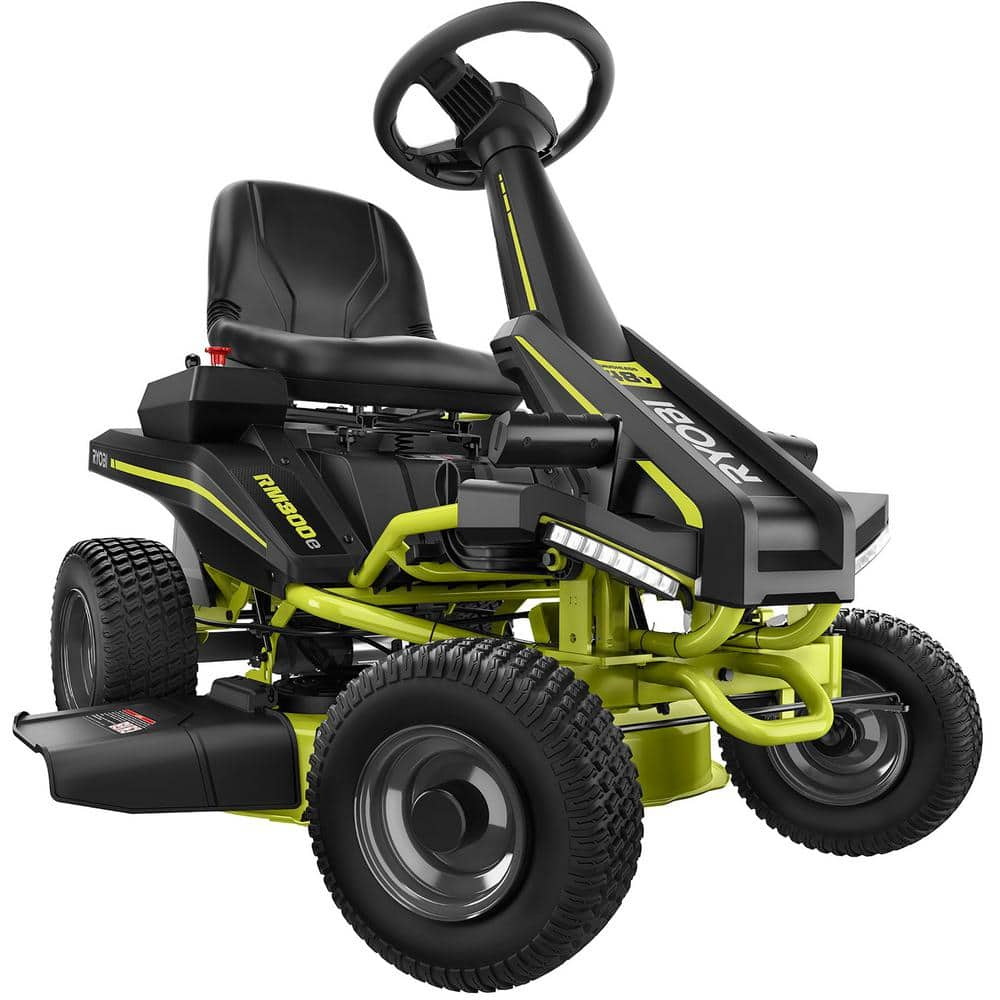Troy-Bilt Bronco 42 in. 19 HP Briggs and Stratton Engine Automatic Drive Gas Riding Lawn Mower
19 HP 544cc single cylinder Briggs and Stratton intek engine. Automatic transmission with foot pedal control drives like a car. 42 in. twin blade cutting deck for lawns up to 2 acres.
A powerful and easy-to-use riding mower, the Bronco 42 is powered by a Briggs & Stratton Intekengine that delivers easy starting and Dependable performance. Operating this rider is as easy as driving a car with AutoDrive transmission. The foot pedal control provides smooth adjustment of speed and direction. The Bronco 42 is designed to provide easy on and off accessibility with a Step-Thru frame design and quick adjustments of cutting height with the fender mounted 5 position lever. Add versatility to your riding mower with optional attachments like a rear bagger or mulch kit and tow behind accessories such as aerators, dump carts and sprayers. You can depend on Troy-Bilt lawn tractors to keep yardwork from feeling like a chore.
- Briggs & Stratton Intek engine offers pressure lubrication that helps to prevent engine damage and extends the life of your mower
- Built In America with U.S and Global Parts since 1937
- AutoDrive transmission with foot pedal control drives like a car
- 42-in deck ,with anti-scalp deck wheels to prevent turf damage, delivers a clean, even cut. Mulch kit (sold separately) helps maintain a healthier lawn
- Step-Thru frame design provides easier on and off access by providing more leg room
- Make yard clean up easier by using a rear bagger to collect grass clippings and leaves for use as compost or bag for disposal (sold separately)
- Maintain control with easier navigation around landscape borders and obstacles with 18-in turn radius
- Twin-blade, side discharge deck cuts quickly and cleanly with 5-position deck height adjustment
- Ride with more comfort and less vibration with mid-back seat and rubber footpads
- Rear hitch makes it easy to pull garden carts, sprayers and spreaders (attachments sold separately)
- Increased visibility with automatic headlights
- 2-year limited warranty
- The Troy-Bilt Bronca 42 comes fully crated and requires some assembly upon arrival
Additional information
| Assembled Depth x Height x Width (in.) | 70 x 35.5 x 47 |
|---|---|
| Cutting Width (in.) | 42 |
| Front Wheel Size (in.) | 15 |
| Mower Deck Width (in.) | 42 |
| Rear Wheel Size (in.) | 20 |
| Turning Radius (in.) | 18 |
| Certifications and Listings | No Certifications or Listings |
| Manufacturer Warranty | 2-Year Limited Warranty |






by David
I love this mower it is GREAT.
by Rich
A top-value mower. Sold out at all local stores and no online buys. SOLUTION: Order via an in-store Customer Service rep (Home Depot, etc.) FREE DELIVERY. Be aware the Delivery Date you get may be up to a month away. But, my 19hp Bronco arrived 9 days later. A few items to be aware of: 1. I ordered the 19hp Bronco because my lawn has a few hills; this extra Hp helps v.s. the 15Hp model. 2. The Bronco arrived SUPER WELL CRATED (See photo). It is NOT easy to get it uncrated; 2 guys are recommended to do this. 3. CAUTION: The seat installation is tricky. See the Owners Manual for how-to instructions to avoid my “Seat Bottom PROBLEM” (See photo). Slide the two lower white fitting into the metal base plate BEFORE you hand-tighten the upper bolt; If the lower white fittings pop into the seat, all is not lost. Toss them around inside the seat until they are near their respective holes. Then get a long nail or wire (with a small hooked end) that fits into the hole in the fitting. Use this to lift the top of the fitting into its hole. Finally, slide the tips of two butter knives under the sides if the fitting, and pry it up. NOTE: Align the side-groves of the fitting properly before you do the “pry-up” step.
by Madge
I’m pleased with the mower so far. I can’t get as close to some things as I did with my other mower but its okay, I can live with it. Just more weed eating to do. So far so good. I’m very picky with my yard, I’m pleased with the Troy. I mow, yard looks good!